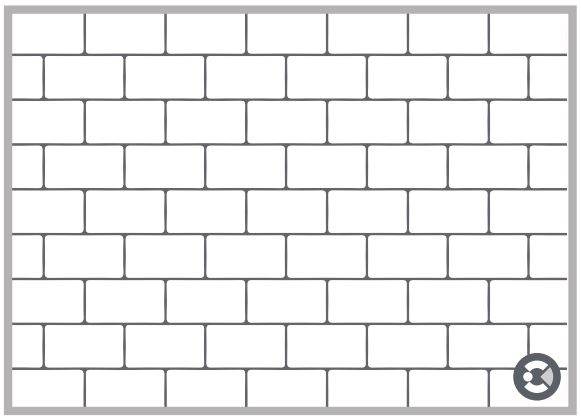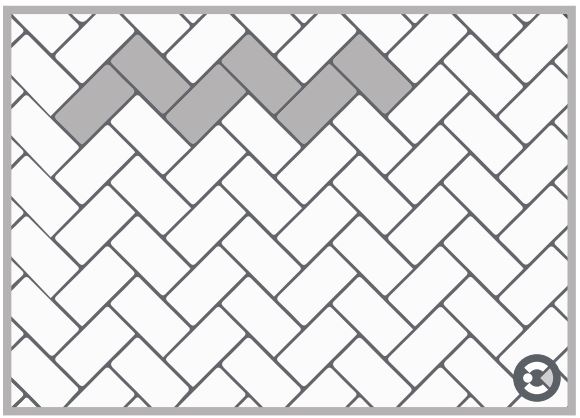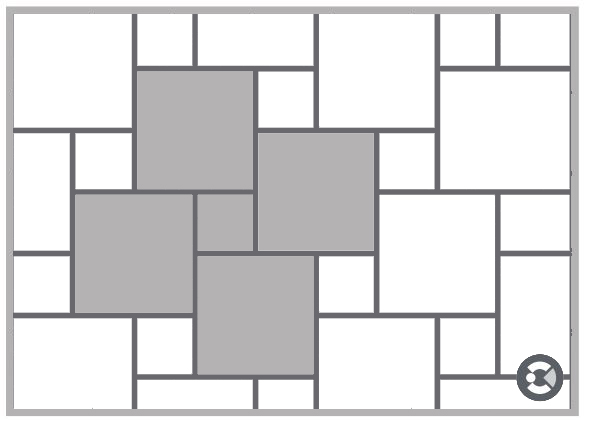When looking at tiling for floors or walls, there is a vast selection of laying options that create a variety of designs and finishes. To help narrow down your choices, we’ve created a quick guide to the most common tile laying designs.
Stack bond pattern
Square and rectangular tiles can be laid in a classic grid formation, creating a clean and simple flooring pattern. Also known as stack bond, it is one of the simplest laying formations to choose from and can often give the cleanest finish.

Diagonal pattern
Another laying option for both square and rectangular tiles is diagonal. Very similar to the straight laying pattern, the tiles are simply laid at a 45 degree angle to create diamond shapes.
Brick bond pattern
Offsetting tiles against each other is a way of varying the flooring pattern. Designed to represent a traditional brick wall, where the edge of the brick is lined up with the centre of the brick below, it is also known as a running bond pattern. Alternatively, opt for a 1/3 offset pattern, whereby instead of lining the edge of a tile up with the centre of the tile below, it is offset by a third of the below tile.

Herringbone pattern
With rectangular tiles, the herringbone formation is another popular choice. Seen most commonly in hallways, the tiles are laid in a zig-zag formation of V shapes that alternate at 45 degrees, resembling the bones of a fish, and are often laid in the direction of most common travel. The herringbone pattern is a great way to add a point of difference to your flooring and can be created with tiles of varying colours to create an eye-catching design.

Versailles pattern
The Versailles pattern has been influenced by the classic French architecture in and around the area of Versailles. Versailles flooring generally uses 4 different-sized tiles to create an elegant flooring style. Although the floor tiles appear to have been laid randomly, they require careful planning and laying in order to reach the desired effect.

Basket weave pattern
A basket weave patterned tile floor is constructed using rectangular tiles. It generally consists of 3 rectangular tiles creating a square, with the adjacent square being constructed of 3 rectangular tiles laid at 90 degrees to the original square. Simple to lay, the basket weave pattern is a great way to add a point of difference to your flooring and create a square grid pattern with rectangular tiles.

Pinwheel pattern
The Pinwheel pattern is similar to the basket weave pattern in that it creates a number of squares that are repeated to create a gridlike pattern. The pinwheel tile pattern consists of four rectangular tiles that are laid at 90 degrees to the adjacent tile to form a square, with a small square tile filling the centre.
Modular pattern
A modular tile pattern is one which is made up of different shapes or sizes of tile. A selection of tiles creates a module, most commonly a square, and this pattern is repeated across the floor. This can be created with different colour tiles to create a point of interest, or the same colour tiles to create a more subtle pattern.








